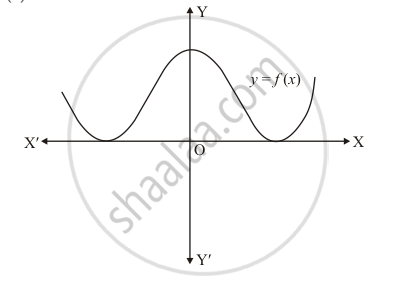Advertisements
Advertisements
Question
If (x + a) is a factor of 2x2 + 2ax + 5x + 10, find a.
Solution
Given (x + a) is a factor of `f(x) = 2x^2 + 2ax + 5x + 10`.
Let us now divide `f(x)` by x + a .
We have,

Now, remainder = 0
` 10 - 5a = 0`
` 10 = 5a `
`10/5=a`
`2 =a`
Hence, the value of a is 2 .
APPEARS IN
RELATED QUESTIONS
Write the standard form of a cubic polynomial with real coefficients.
If the product of zeros of the quadratic polynomial f(x) = x2 − 4x + k is 3, find the value of k.
In Q. No. 15, write the sign of c.
The graph of a polynomial f(x) is as shown in Fig. 2.21. Write the number of real zeros of f(x).

Divide. Write the quotient and the remainder.
(−48p4) ÷ (−9p2)
Divide. Write the quotient and the remainder.
(5x3 − 3x2) ÷ x2
Let the polynomials be
(A) −13q5 + 4q2 + 12q
(B) (x2 + 4)(x2 + 9)
(C) 4q8 – q6 + q2
(D) `– 5/7 y^12 + y^3 + y^5`
Then ascending order of their degree is
The below picture are few natural examples of parabolic shape which is represented by a quadratic polynomial. A parabolic arch is an arch in the shape of a parabola. In structures, their curve represents an efficient method of load, and so can be found in bridges and in architecture in a variety of forms.




If the roots of the quadratic polynomial are equal, where the discriminant D = d2 – 4ac, then:
The below picture are few natural examples of parabolic shape which is represented by a quadratic polynomial. A parabolic arch is an arch in the shape of a parabola. In structures, their curve represents an efficient method of load, and so can be found in bridges and in architecture in a variety of forms.




If α and `1/α` are the zeroes of the quadratic 2x2 − x + 8k, polynomial 2 then k is:
Degree of the polynomial 4x4 + 0x3 + 0x5 + 5x + 7 is ______.
